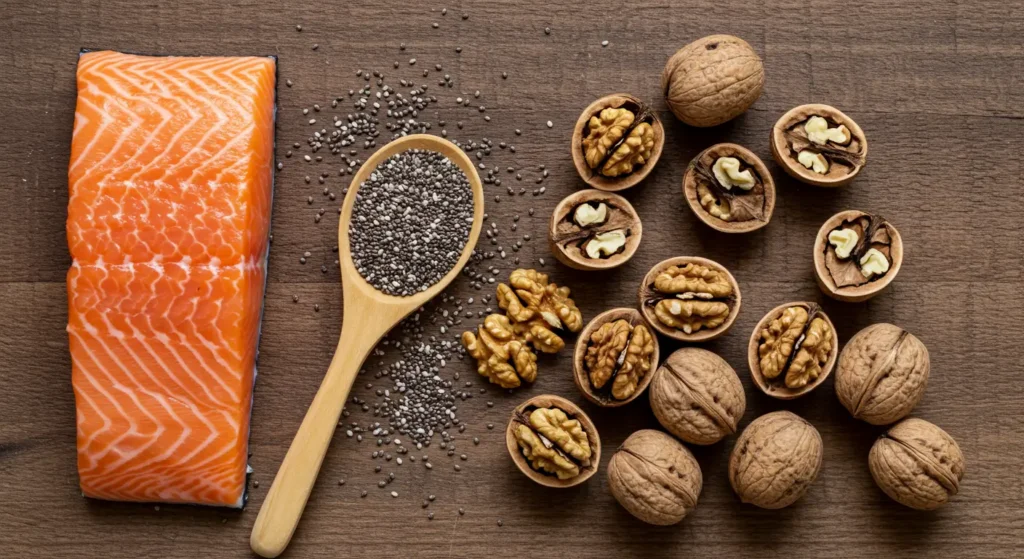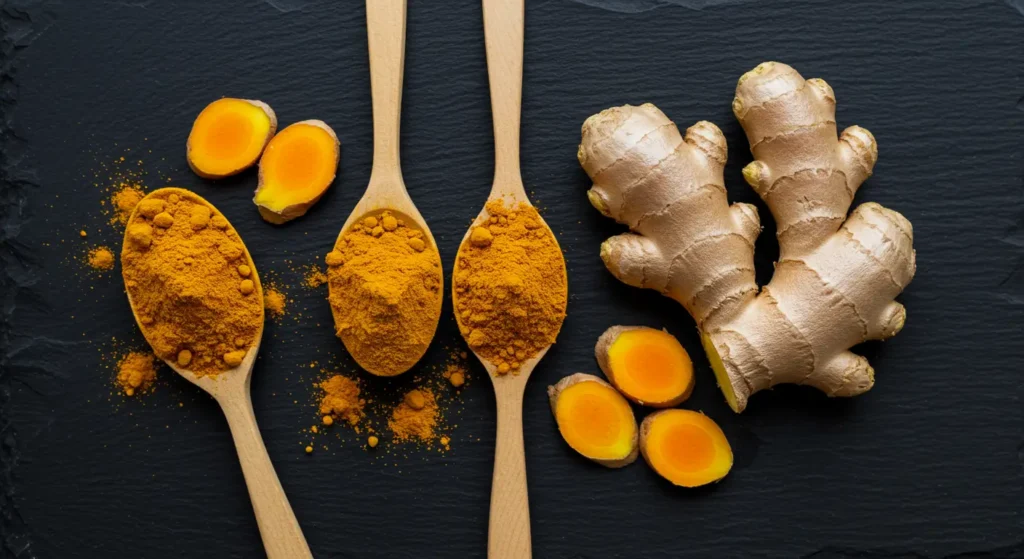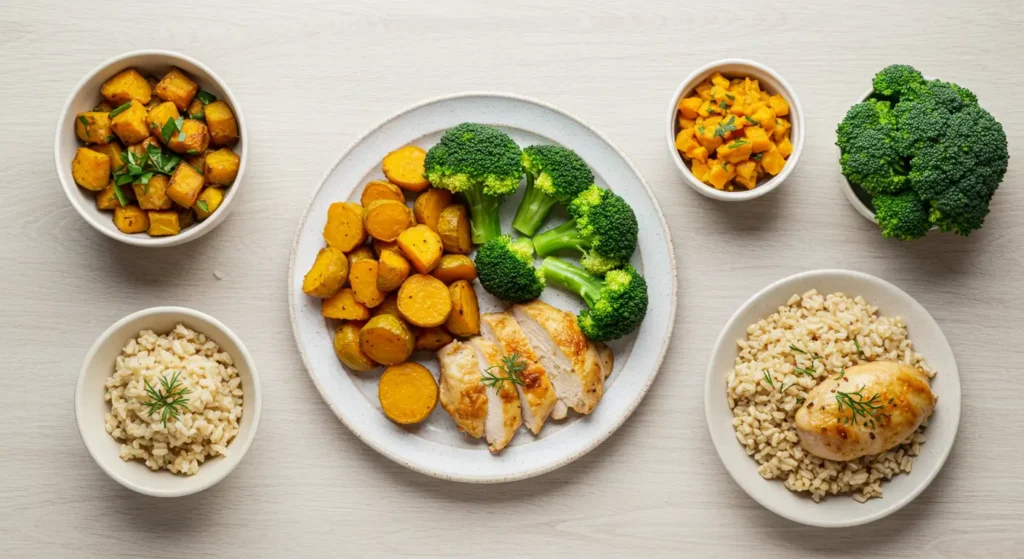
Knee pain is one of the most common and limiting issues adults face after 60. While many turn to medications or temporary relief solutions, few realize that what you eat can significantly impact your joint health.
In this article, we’ll explore top anti-inflammatory foods that help knee pain after 60, providing practical advice you can start applying today. If you’re tired of waking up with stiff knees or feeling discomfort after a short walk, these food-based strategies can make a real difference.
Understanding the Role of Inflammation in Knee Pain
Inflammation is the body’s natural response to injury, stress, or imbalance. However, chronic inflammation, especially in the joints, can lead to ongoing pain, reduced mobility, and stiffness.
Adults over 60 are particularly prone to this due to wear and tear on the knees and age-related slowdowns in healing and recovery. Understanding how to calm inflammation through nutrition is a powerful step toward reclaiming your comfort and mobility.
Foods Rich in Omega-3 Fatty Acids

Omega-3s are among the most powerful anti-inflammatory nutrients, especially beneficial for joint health. For those who don’t eat fish regularly, high-quality omega-3 supplements can be an effective alternative that are highly rated and tailored for joint support. Fatty fish like salmon, mackerel, and sardines are loaded with EPA and DHA — types of omega-3s that directly reduce inflammatory markers.
Including these fish in your diet 2–3 times per week may help reduce knee stiffness and improve joint flexibility.
Good sources: Salmon – high in EPA and DHA, easy to grill or bake
Chia seeds – great plant-based source
Walnuts – rich in alpha-linolenic acid (ALA), a plant omega-3
Salmon – high in EPA and DHA, easy to grill or bake
Chia seeds – great plant-based source
Powerful Spices That Fight Joint Inflammation

Turmeric and ginger are more than just flavorful additions to meals — they are functional foods packed with anti-inflammatory compounds.
Curcumin, the active ingredient in turmeric, has been shown to be effective in reducing joint pain. Ginger, on the other hand, helps relieve muscle and joint pain when consumed regularly.
How to include: Turmeric tea with black pepper for absorption
Fresh ginger in smoothies or stews
Turmeric capsules for those who have difficulty with the taste
Leafy Greens and Antioxidant-Rich Vegetables
Dark greens such as spinach, kale and chard are rich in antioxidants, fiber and vitamins that reduce inflammation. Many of these greens also support better gut health, which can help regulate inflammation from the inside out.
They also contain vitamin K, which is important for bone health and preventing cartilage wear.
Colorful vegetables such as broccoli, peppers and carrots are also great allies for the joints.
Suggestions for inclusion: Spinach – rich in magnesium, vitamin K and antioxidants
Broccoli – contains sulforaphane, a natural anti-inflammatory
Bell bell pepper – high in vitamin C
Healthy Fats That Protect Your Joints
Not all fat is bad. Good fats help fight inflammation and protect joints.
Extra virgin olive oil contains oleocanthal, which has similar anti-inflammatory effects. Avocado, nuts and seeds are also excellent sources of beneficial fats.
Highlights: Extra virgin olive oil – ideal raw in salads and light hot dishes
Avocado – rich in good fats and fiber
Flaxseed – vegetable source of omega-3 and fiber
Building an Anti-Inflammatory Meal Plan

Knowing what to eat is the first step. Practical application on a daily basis is what generates results.
Example of a daily plan:
Breakfast: smoothie with berries, spinach, linseed and vegetable milk
Lunch: salad with grilled salmon, green leaves and olive oil
Dinner: roasted vegetables, brown rice and chicken with turmeric and ginger
The secret is consistency: small daily choices make big changes over time.Knowing what to eat is the first step. Practical application on a daily basis is what generates results.
Example of a daily plan: Breakfast: smoothie with berries, spinach, linseed and vegetable milk
Lunch: salad with grilled salmon, green leaves and olive oil
Dinner: roasted vegetables, brown rice and chicken with turmeric and ginger
The secret is consistency: small daily choices make big changes over time. Using anti-inflammatory meal prep containers can make your routine easier and help you stay consistent.
Enhancing Results with Movement
Food is a powerful base, but combining it with light movements enhances the results. To complement your diet, explore these daily joint care habits that reduce pain and support long-term mobility
Programs like Ageless Knees offer safe and effective routines for people over 60, focused on stabilizing and strengthening the knees with gentle, progressive movements.
This dual approach – eating well and moving with awareness – is the most complete way to reduce pain.
👉 Click here to learn more about how Ageless Knees works

Final Thoughts – Eat Well, Move Smart, Age Strong
As we get older, staying active and pain-free becomes essential to living a better life. Choosing the right foods is about more than nutrition – it’s about freedom, movement and independence. If knee pain interferes with your rest, adding gentle nighttime relaxation techniques can also support deeper sleep and recovery.
Whether you already suffer from knee pain or just want to prevent future problems, every balanced meal and conscious stretch makes a difference.
What about you? What food or habit has helped you with joint pain?
Frequently Asked Questions
What are the best anti-inflammatory foods for knee pain?
Fatty fish, turmeric, ginger, leafy greens, olive oil, and berries – they all help to reduce inflammation in the joints.
How often should I eat these foods to see results?
Ideally, include 1-2 of these foods in every meal. Within a few weeks, the benefits will start to show.
Can diet alone stop knee pain?
Diet helps a lot, but the best results come from combining it with light, targeted exercises, such as those in the Ageless Knees program.
Is it okay to use supplements instead of food?
Supplements such as turmeric or omega-3 can be useful, but the ideal is to prioritize natural foods whenever possible.
How long does it take to feel the benefits of an anti-inflammatory diet?
Some notice a difference in a week, others in a few. The important thing is to remain consistent and be patient.
Disclaimer:
The content provided in this article is for informational and educational purposes only and is not intended to serve as medical advice, diagnosis, or treatment. Always consult a qualified healthcare professional before making any changes to your diet, exercise, or wellness routine. The product mentioned is not intended to diagnose, treat, cure, or prevent any disease. Individual results may vary.
